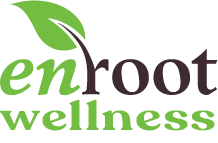Pet Health & Wellness Begins with the Food: Pet Food Failings
Optimize Your Dog’s Health Through Food
Your pet’s health and wellness start with the food. Pet Health & Wellness Begins with the Food Whether you have a puppy a middle-aged, or an elder dog, their health is primarily dependent upon the quality of their food, not just the quantity. As their primary input, we must understand the failings of the majority of pet foods on the market. Then, you can influence your dog’s health and longevity by optimizing what’s in their bowl.
Our canine companions bring a world of joy, love, connection, experiences, and lessons to the life that we share with them. It should be no secret to you that our pet’s health is often on a similar trajectory as human health; rife with chronic disease, hormone imbalances, cancer, and a shortening lifespan. And all the anti-inflammatory, anti-biotics, and anti-histamine drugs won’t cure the chronic. What contributes to these chronic conditions?
Pet Food Failings & How to Influence Your Dog’s Health
Lack of Freshness
The majority of pet food sold in this country is dry food kibble. These would be considered “heavily processed foods” based on the adulteration to the original form of the food ingredients and to the nutritional constitution in the as-fed form.
You will see the statement “complete and balanced” in the majority of pet foods you find on the shelf at your local pet food store. In no other industry will you find this declaration, this food is complete and balanced™! Not in the baby food industry, the cattle industry, or even the adult food industry. We do not expect or even strive to provide all nutrients a mammal needs in a SINGLE MEAL (aside from mother’s milk prior to weaning). Except in the pet food industry. Why do we ascribe to this? Or perhaps the more important question to ask is, why have we adopted this as formidable?
Pet food conglomerates and marketing companies sold us this line.
And we bought it. And continue to buy it. Literally and figuratively.
There is a better way.
The better way is to add more freshness to your pet’s meals. A dog’s meal cannot be complete without fresh foods. It’s not scientifically possible or ethically reasonable to call it so. For more information on adding fresh foods or transitioning your dog’s meals, see “Diversity at Dinnertime” blog post.
Dr. John Smith, a Functional Medicine Veterinarian, discusses detoxification in dogs through a collaborative effort with diet and nutrients, to combat the toxins found in pet food and other sources.
Lack of Balanced Macronutrients
The dog’s ancestral diet provided approximately 49% of calories from protein, compared to about 25% on average in the dogs that share our homes with us today. Dogs have not been domesticated long enough for their biological systems to have shifted drastically enough to be able to withstand the difference (ie drop) in protein percentage.
Astonishingly, the diet of a dog’s ancestor had an average of 6% of its calories coming from carbohydrates. Today’s dog has 43% of its daily calories coming from carbohydrates. That’s a whopping 7-fold increase!
In general, the majority of dry food kibble contains the least amount of protein (and moisture content) as compared to dehydrated, freeze-dried (both of which are usually fed after re-hydrating the food), and canned pet food.
The benefit of canned food is the extra moisture, which is ideal for digesting any kibble they might be consuming together with the canned food as well as for preventing dehydration. A downfall of canned food is the high heat applied to the food prior to and after canning, to “eradicate pathogens”. Both dehydrated and freeze-dried foods (again water/moisture is added before feeding) are considered less processed due to the low or no heat applied in processing and the inherent moisture content.
For more information on macronutrient considerations and calculations, see “Macronutrients De-Mystified in Pet Foods”.
Lack of Quality Fats
The majority of pet foods purchased/sold in this country contain too many omega-6 fatty acids and not enough omega-3s, omega-9s, EPA, DHA, CLAs, etc (CLA – conjugated linoleic acids, those that come from cows that are pasture-raised, ie “grass-fed beef”).
If we were to think of just omega-6 and omega-3 fatty acids on a teeter-totter, when a diet consists of too much of the 6, the balance is off and one side of the teeter-totter rests on the ground.
In general, too many omega-6s and poor-quality fats create inflammation in the body. Whereas omega-3s (those that come mostly from fish, though also nuts and walnuts have the highest content) help to quell inflammation in the body.
This is similar to human health. On average, Americans consume a ratio of 25:1 omega-6 to omega-3 fatty acids, whereas a more ideal ratio is suggested at 5:1 up to 1:1. So it’s not only that we’re consuming too much omega-6, the issue is that the 3s are also not high enough, throwing the ratio off of ideal to balance inflammatory responses in the body. Omega-3s are highest in foods like cold-water fish (mackerel, sardine, herring, haddock, anchovy), flaxseed, chia seeds, and dark, leafy vegetables.
We should also take into consideration the quality of fats that are typically included in pet food, rendered fat, and the rancidity and AGEs that occur when a low-quality fat (especially) is cooked at high temperatures (400-1000º).
Advanced Glycation End-products (AGEs) are oxidized compounds that contribute to pathogenic pathways in conditions like diabetes and accelerated aging.
A Better Way
As you get more acquainted with the limitations of pet foods on the market, you will be better prepared to influence your pet’s health by preparing their meals in a better way. This does not have to be an expensive or time-consuming endeavor. Though it’s bound to be more fulfilling, for both you and your dog!
Here are some ideas to improve the health and wellness of your dog:
- Add some tin fish to their bowl (mackerel, sardines, or anchovies, in water not oil, is preferred) on a weekly basis. This provides a high-quality omega-3 fat as well as calcium through the tiny bones of the fish
- Add water to their food and provide the necessary moisture with which to break down each meal
- Throw in some fresh ingredients from time to time; sautéed or steamed broccoli, green beans, or chicken
- Schedule a wellness consult and we can put together a Functional Food Plan for your pup
Let’s bring functional nutrition to our dogs in the 21st century!
Happy Feeding.







